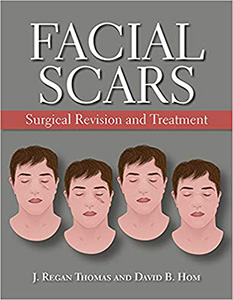Cover Page
Title Page
Copyright Page
Dedication Page
Contents
Preface
Contributors
Section I: Basic Considerations
1. Surgical Anatomy of Facial Scars
2. Wound Healing and Scar Formation
3. Fetal and Pediatric Skin Scarring
4. Scars and Ethnicity
5. Medical Conditions and Diseases Giving Higher Risk of Scarring
Section II: Concepts of Facial Skin Wound Treatment
6. Anesthetic Considerations for Skin Surgery
7. Incision Planning for Better Facial Scars
8. Wound Closure Materials and Devices
9. Acute Wound Management of Scar Revision Techniques
Section III: Scar Revision Surgery
10. Preoperative Scar Analysis and Operative Planning
11. Dermabrasion and Scar Treatment
12. Lasers in Scar Treatment
13. Z-Plasty in Scar Revision
14. W-Plasty in Scar Revision
15. Geometric Broken Line Closure (GBLC) and Scar Revision
16. Scar Revision in the Pediatric Age Group
17. Improved Scars from Flaps and Trapdoor Scars
18. Scar Revision in Hair-Bearing Areas
19. Keloids and Hypertrophic Scars
20. Improvement of Acne Scars
21. Facial Burn Scars: Surgical Revision and Treatment
22. Scar Revision of the Lips
23. Eyelid and Periorbital Scar Revision
24. Pearls and Pitfalls in Scar Management
Section IV: Nonsurgical Considerations
25. Cosmetics, Hairstyles, and Facial Accessories for Scar Camouflage
26. Using Injectable Materials for Scars
27. Techniques for Quantitation of Scar Characteristics
28. Nonsurgical Therapies for Scars
Index


